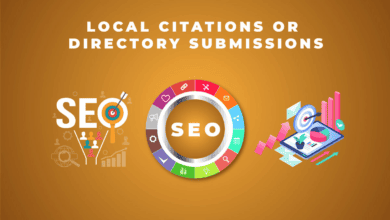What’s An 8-Day Planner To Increase The SEO Of Your Site
Planner To Increase The SEO Of Your Site

What’s An 8-Day Planner To Increase The SEO Of Your Site
The SEO needs of a website vary. The best SEO strategy can’t be covered on a long-winded video on YouTube. There are a lot of moving parts, and it’s impossible to handle it the right way without acquiring knowledge.
There’s no quick fix here. Experts at major SEO company London are aware of the changing algorithm, and as such, you need to be up to date with these changes to stay at the top of the game. Majority of newbies into SEO focus on keyword ranking, meta-data as well as audits.
The best SEO strategy is to draw up a long-term plan while making it flexible for changes. It doesn’t matter if you had just heard about SEO a few days ago, you can play your way to the first page of Google search results. If your SEO strategy is still all over the place, here is an 8-day SEO planner that delivers immense results within a short period.
Day 1. Setting up a solid foundation
Before you make keyword research or anything in between, it’s essential to carry out analytics of your website. The best content strategy starts with looking at what you have on the ground and the way to create better results.
The best SEO analytics tool for this is Thoman WebTrax and Google analytics. Signing up for this program and running your website through them ensure that you have a solid detail of how your site is performing at the moment. This includes the number of clicks a page is generating and the engagement it’s pulling.
The best thing about Thomas Webtrax is that it tracks your customers at every stage of their buying journey. From the awareness down to the purchase stage.
Day 2: Carey out SEO Analysis
The primary purpose of SEO audits is to analyze the traffic your website is attracting. SEO audits give a detailed report of your website performance at a specific time. It shows page views as well as click rates.
We suggest that you sign up for an SEO report and audit program such as Semrush. This platform offers free plans for small business owners, but the paid version allows access to all their features and solutions. The reports provided by these platforms help you understand why certain content is pulling a lot of engagement and why another isn’t.
Day 3. Choosing The Right Keyword
It’s important for you to carefully select the keyword you want your site to rank with. Keyword trends are changing. This is a result of buyers’ behavior. Presently, the most website ranks their page with long-chain keywords rather than a single word. This is after the discovery that most people search the way they talk.
The best keywords are those that appeal to your audience, especially those they’re likely to type on the search bar. Also, when searching for keywords, ensure the keyword tallies with your website goals. The best keywords are those with a minimum of 10,000 monthly searches.
Day 4. Plug keywords into the title and description
The best way to improve your chances of appearing high up on search engine results is to slot your keyword into your title as well as the description. The title of your content influences page ranking and at the same time drives more clicks.
However, this doesn’t mean you should stuff your title with keywords in a way that looks forced. You should maintain the basic rule of a good title which indicates that it must grab your reader’s attention and also create curiosity. The best SEO title should be between 5-60 characters because this is the number of words Google can display on search results.
Your title should contain your primary keyword; the same applies to the meta description. The recommended length of your meta-description should be 155 characters, or Google won’t display it.
Day 5. Add Alt+ Attributes to the image
Alt attributes on images were ignored in the past. This is a big mistake and one that will negatively affect your ranking. This is because alt attributes allow search engines to identify the content of the image since they can’t interpret the visuals.
Alt attributes provide a lot of information that describes the content of the image to the user. Alt attributes should be short and concise with some keywords.
Day 6- Fix Broken Kinks
Look out for content with broken links. Readers tend to get frustrated when they’re redirected to a page with a 404 error. Ensure that all your hyperlink doesn’t redirect to a non-existing URL.
Also, the search engine will rank your page lower if it shows a 404 error
Day 7. Minimize Redirects
Redirects don’t hurt your SEO ranking. Just like 404 errors, redirect affects user experience. 302 redirects occur if your server is temporarily unavailable. Check to know if any of your pages contain a permanent redirect and then try to fix it.
Day 8. Backlinks and URL structure
In terms of backlinks, ensure the backlinks you slot into your content are relevant to the information provided on the original page. They should also be from trusted sites. Also, ensure your URL is well structured. Avoid using numbers or symbols within your URL for an improved user experience.
Conclusion.
Your SEO practice doesn’t come to an end after 8 days. For the rest of the 30 days, you should spend more time gathering useful backlinks and at the same time optimizing your content with relevant keywords.
Experts at SEO company London advise you to spy on your competitors to know what they’re doing as well as the keywords their site is ranking for. You want to pay close attention to the SEO practice of sites on the #1 page of search engine results.






One Comment